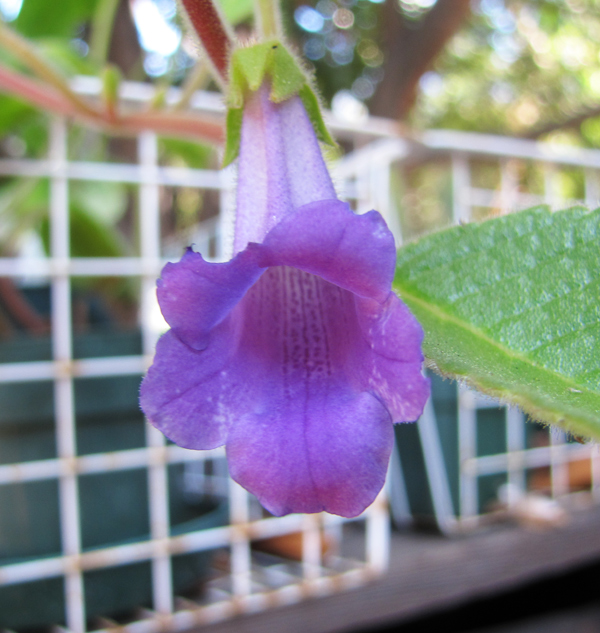Plant Description
|
| Growth |
Indeterminate |
| Habit |
Upright or recumbent stem(s) |
| Leaves |
Green, sticky, pebbled |
| Dormancy |
Stems normally deciduous. Plant dormant in winter. |
Flowering
|
| Inflorescence |
axillary cyme |
| Flowering |
Autumn. Flowering specimens were collected in Brazil in
April and May, corresponding to October and November in
the Northern Hemisphere. |
| Flower |
Tubular, 4-5 cm long, with throat markings |
Horticultural aspects
|
| From seed |
Four years to bloom, under my far from ideal conditions |
| Hardiness |
Yet to be determined. Based on its native habitat (mountains),
it should be at least somewhat cold-tolerant. |
| Recommended? |
No. The floppy habit, sticky stems are not pluses.
The flowers are attractive, but mimic (e.g.)
S. bragae
(sp. "Ibitioca").
My plant bloomed once and then died. |
Botany
|
| Taxonomic group |
The Corytholoma clade
appears likely.
This species was found in an area with
S. harleyi.
Preliminary phylogenetic results suggest a close relationship
between the two species.
|
| Pollinator |
Bees, judging by the shape of the corolla.
It is speculated that the possibly recent divergence of this
species and S. harleyi
is due to the two species selecting different pollinators,
with the latter specializing in hummingbird pollination.
|
| Location |
Chapada Diamantina in Bahia state of Brazil. According to
the initial publication,
it has been found at only two locations in the district
of CatolÚs.
The terrain nearby is
campo rupestre
and threatened by fires and grazing. |

